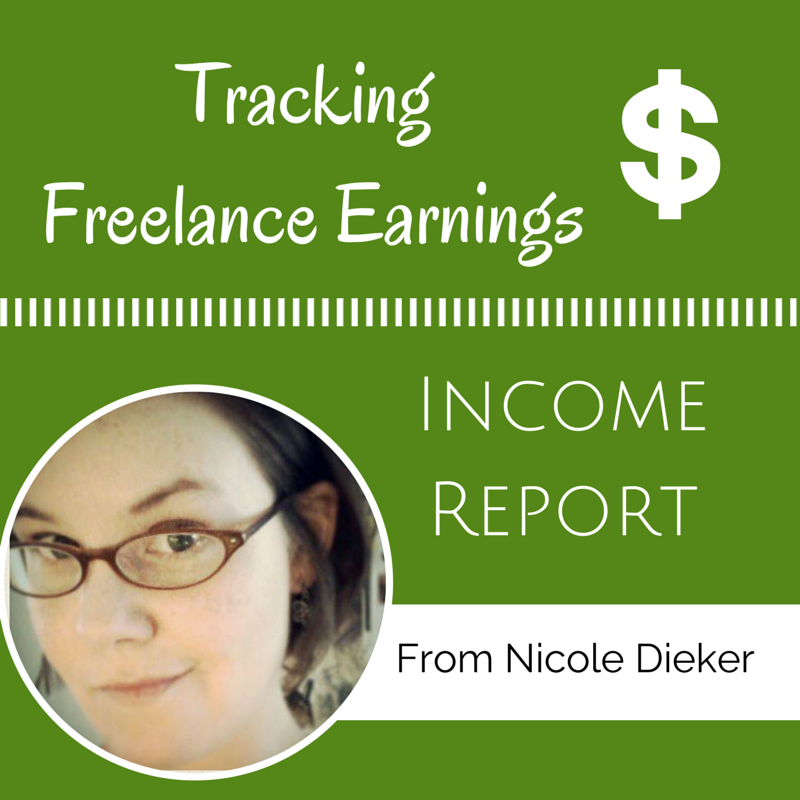When was the last time you approached a client about increasing your freelance rates?
We’re almost at the end of the year, which means it is time to start sending out those rate negotiation emails and seeing if you can increase your income in 2016.
But before we get to that, here are November’s earning numbers:
Completed Pieces: 71
Work Billed: $6,561.63
Earnings Received: $5,136.00
This month, I more than made up for October’s low earnings, billing $1,561 more than my monthly income goal of $5,000. I wrote roughly 46,700 words in November, with an average per-piece earning of $92.42. My highest earning piece was $1,023, and my lowest earning piece was $35.
Examining my financial situation
I’m in an interesting position as a freelancer, because at this point I earn as much writing one piece for my highest-paying client as I earn writing a week’s worth of pieces for my lower-paying clients. To put it more bluntly: I can spend 40 hours writing 15 pieces to earn $1,000, or I can spend four hours writing one piece and earn $1,000.
I know clients willing to pay $1,000 per piece are rare — if it were that easy to secure those clients, everyone would have them — but it’s making me think about the value of my work and how I can shift more of my client relationships to the higher end of the pay scale.
After all, if my work is worth $1,000, sticking with my lowest-paying clients is actually costing me money over time. I like all my clients, which makes it difficult to want to move on from them. A good relationship is often just as valuable as a paycheck, but I know that if I’m going to earn more money in 2016, I have to find clients willing to pay more.
Part of this process will include securing new clients. This month, however, I’m going to use my current client relationships to negotiate as many rate increases as possible.
Three ways to approach rate negotiations
Every client relationship is different, which means my rate negotiations have to be tailored to the individual client. With that in mind, here are the three strategies I’m using to start the negotiation conversation:
1. Email clients with a suggested 2016 rate
The easiest way to start the rate negotiation process is to email a client to suggest an increased rate.
“Easy” in this case is relative; first, you have to decide what you want that rate to be, knowing that the client may push back with a slightly lower number. Second, you have to justify the rate increase — is it because you have transitioned into a regular contributor role? Is it because your pieces consistently achieve high rates of engagement and social sharing? — and lastly, you have to figure out when to make the ask. (The day before a holiday weekend, for example, is probably not the best time to send this email.)
But once you have all those pieces in order, it is pretty easy to write an email that begins “I want to start a conversation about 2016 plans and rate adjustments,” and lay out what you think is appropriate and why. This strategy successfully worked for The Write Life, and we quickly completed the rate negotiation process to everyone’s satisfaction.
2. Link a rate increase to a scope increase
One of my clients announced a change in publication strategy that will require writers to do more research and prep work before drafting pieces. That’s a perfect context in which to suggest a rate increase. I’m going to write one of these new pieces this week, and keep track of the additional work involved. Then I’ll be able to send the client an email quantifying the time and scope increase and suggest a new rate.
3. Ask the client if their publication offers a pathway for growth
In some cases, I am one of many freelancers working for a single large client. Using the “email a suggested rate increase” is difficult in this situation for two reasons: first, because my editor might not have the ability to directly adjust my payment; and second, because when you are one of 30-plus freelancers, it becomes much more difficult to quantify how your pieces bring the most engagement or the greatest value to the organization.
I did an interview with Katie Lane of Work Made for Hire for The Freelancer on how to deal with these types of negotiation scenarios. She suggests contacting your editor to say that you enjoy working for them and you’d like to continue the relationship, and “you’d like to know how [the client] makes adjustments to compensation or how they make compensation decisions.”
So that’s how I’ll approach these clients. I’ll know pretty quickly whether there is any opportunity for rate increases, or whether I’ll have to plan to phase these clients out in the future as I continue to grow my client portfolio.
Then I’ll have to start looking for more of those $1,000-per-piece clients — but that’s a project for next month.
How do you approach rate negotiations? Have you used any of these three strategies?







